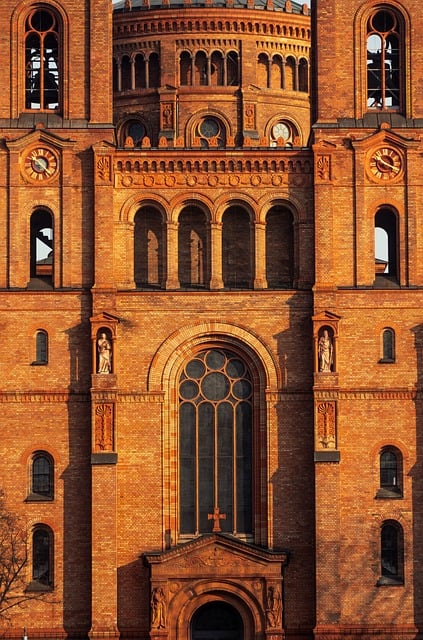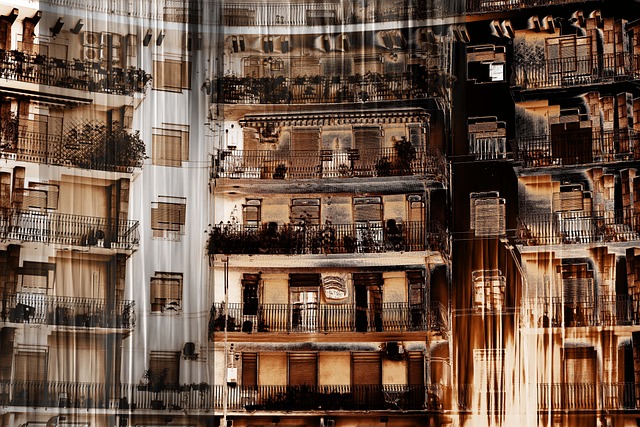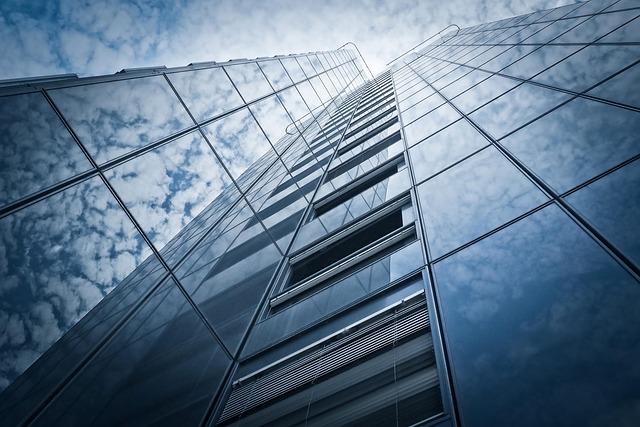Custom metal facades are transforming buildings into artistic statements, offering architects a diverse palette of metals and advanced techniques like welding, cutting, and finishing to create unique designs. Through methods such as laser cutting and water jet cutting, intricate patterns and features can be achieved, making each facade a bespoke piece. These facades provide durability, low maintenance, and energy efficiency, while custom design allows for tailored features that enhance the character of residential and commercial structures, as exemplified by global landmarks like the Shanghai Tower.
Discover the art of custom metal facades—a game-changer in modern architecture, transforming residential and commercial spaces into striking, unique structures. This comprehensive guide explores the world of tailored metal cladding, delving into design elements, materials, and techniques that make it a popular choice. From understanding the design process to exploring successful global projects, we reveal the benefits and intricacies of implementing custom facade design, offering inspiration for innovative building aesthetics.
- Understanding Custom Metal Facade Design: Materials and Techniques
- Benefits of Custom Facades for Residential and Commercial Spaces
- Designing and Installing Custom Metal Façades: A Step-by-Step Guide
- Case Studies: Notable Custom Metal Façade Projects Around the World
Understanding Custom Metal Facade Design: Materials and Techniques

Custom metal facades have become a popular choice for both residential and commercial projects, offering an array of design possibilities. Understanding the materials and techniques involved in custom facade design is key to unlocking its full potential. Architects and designers can select from various metals, each with unique properties, such as steel, aluminium, copper, or brass, each evoking different aesthetics.
The design process involves intricate craftsmanship and innovative techniques. Techniques like welding, bending, cutting, and finishing are employed to create complex shapes and patterns. Some methods even include punching, laser cutting, or water jet cutting for precise designs. These techniques allow for the creation of distinctive features like panels with cut-out motifs, 3D textures, or custom contours, making each facade a one-of-a-kind masterpiece.
Benefits of Custom Facades for Residential and Commercial Spaces

Custom metal facades are transforming residential and commercial spaces, offering a multitude of benefits that enhance both aesthetics and functionality. One of the primary advantages is their versatility in custom facade design; architects and designers can create unique, visually stunning features tailored to specific structures and styles. This level of personalization allows buildings to stand out and express their individual character.
Moreover, metal facades provide superior durability and low maintenance, making them a wise investment for property owners. They are resistant to weather damage, fire, and corrosion, ensuring longevity and reduced long-term costs. Additionally, custom designs can incorporate insulation properties, natural lighting, and even smart technology, contributing to energy efficiency and modern living standards in both residential and commercial environments.
Designing and Installing Custom Metal Façades: A Step-by-Step Guide

Designing and installing a custom metal facade involves several key steps, ensuring both aesthetic appeal and structural integrity. The process begins with conceptualization, where architects or designers collaborate with clients to understand their vision for the building’s exterior. This includes discussing style preferences, functional requirements, and budget constraints. Once approved, detailed architectural drawings are created, incorporating specific dimensions, materials, and finishes tailored to the client’s needs.
Next, selecting the right metal alloys is crucial. Common choices include aluminum, steel, or copper, each offering unique properties in terms of strength, durability, and aesthetic characteristics. After material selection, skilled fabricators take over, cutting, forming, and joining the metal components according to the design specifications. This stage demands precision and expertise to ensure every detail aligns with the concept. Upon completion, careful installation follows, often requiring specialized equipment and techniques to secure the facade properly. Regular maintenance is also discussed to preserve the custom facade’s beauty and longevity over time.
Case Studies: Notable Custom Metal Façade Projects Around the World

Custom metal facades have transformed the architectural landscape globally, with their unique designs and versatile applications. From residential abodes to towering commercial buildings, these facades offer an array of aesthetic and functional benefits. Let’s explore some remarkable case studies that showcase the potential of custom facade design worldwide.
One standout project is the Shanghai Tower in China, featuring a dynamic metal mesh exterior that blends modern aesthetics with structural integrity. Another notable example is The Edge office building in Amsterdam, renowned for its innovative facade system incorporating solar panels and plant life, seamlessly integrating sustainability with stunning design. In the residential sector, the One Central Park apartment complex in Sydney, Australia, boasts a curved metal cladding that mimics natural waves, creating a striking and harmonious silhouette amidst the urban skyline. These global projects not only highlight the artistic possibilities of custom metal facades but also their ability to enhance energy efficiency and create iconic architectural landmarks.
Custom metal facades have revolutionized both residential and commercial spaces, offering unparalleled aesthetics and functionality. From understanding the diverse materials and techniques in play to appreciating the benefits of these unique designs, it’s clear why custom facade design is a game-changer. The step-by-step guide provides practical insights for those looking to embark on their own projects, while real-world case studies demonstrate the stunning possibilities. By embracing custom facades, architects, builders, and property owners can create vibrant, lasting spaces that stand out in today’s digital era.
